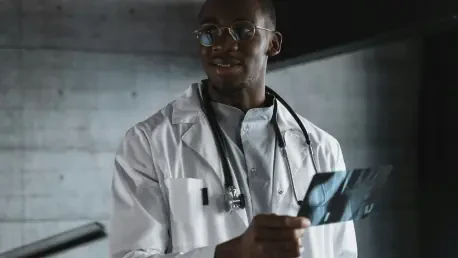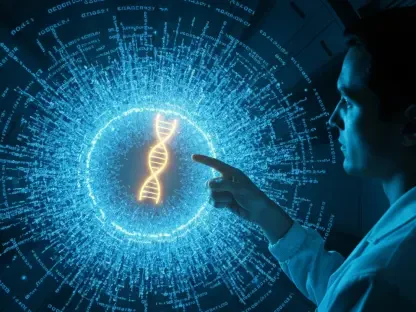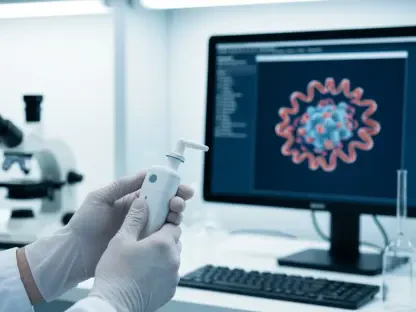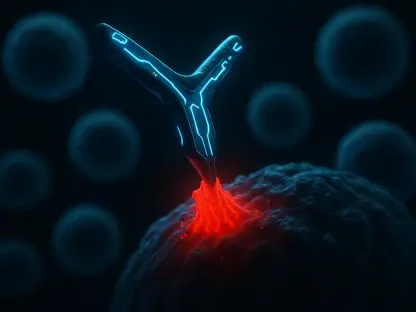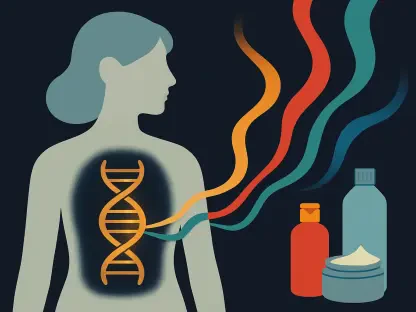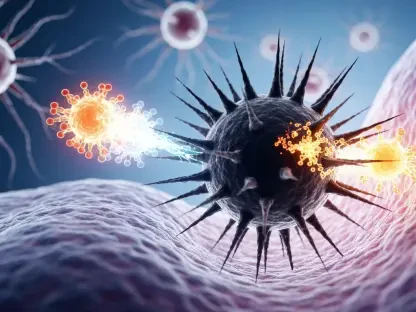In recent years, the field of tissue engineering has witnessed significant advancements as researchers continue to explore innovative methodologies for tissue regeneration and healing. Pioneering research initiatives like The Next Gen Tissue Engineering and Advancement Materials (TEAM) Lab are at the forefront of these developments. Driven by an interdisciplinary team of experts in bioengineering, computing sciences, and medicine, the lab is pushing the boundaries of what is possible in accelerating the healing process and advancing the field of tissue engineering. By harmonizing diverse scientific disciplines, the TEAM Lab is addressing complex challenges in tissue healing, with promising implications for medical treatments in the years to come.
Exploring Cutting-edge Techniques
Innovative Material Science Applications
At the heart of TEAM Lab’s research is the innovative use of material sciences to create 3-D structures that promote cellular growth and regeneration. These structures are enhanced with polymers and nanoparticles, engineered to accelerate tissue healing processes, particularly in the context of wound healing and muscle regeneration. The lab utilizes cutting-edge techniques such as 3-D printing and electrospinning, which are pivotal in developing these sophisticated structures. This innovative approach allows the creation of matrices and scaffolds that closely mimic the natural environment of human tissues, thereby facilitating effective cellular integration and repair. Through the integration of advanced materials, the lab is making strides toward effective solutions for medical conditions where conventional treatments are inadequate, such as chronic wounds and muscular injuries.
Moreover, the application of these techniques is not limited to laboratory settings alone. The practical implications are far-reaching, particularly in treating conditions like diabetic wounds and muscle loss due to trauma or surgery. By harnessing the properties of biocompatible materials and integrating them with cellular components, researchers are opening new frontiers in devising patient-specific treatments. This potential for customization ensures therapies that are not only effective but also tailored to the individual needs of each patient, thus paving the way for personalized medicine to become a reality in tissue repair.
Integration of Nanotechnology
Nanotechnology holds tremendous promise in the realm of tissue engineering, and its integration into TEAM Lab’s research underscores its transformative potential. Utilizing nanoparticles within the 3-D printed scaffolds amplifies the material’s regenerative capabilities by providing targeted delivery of growth factors and drugs. This innovative methodology allows for more controlled and efficient healing processes, reducing the inflammatory response and enhancing tissue integration. The addition of nanoparticles to the scaffold materials helps to protect and stabilize these factors, offering sustained release and minimizing potential side effects. These advancements not only improve the healing rate but also contribute to the development of more robust and durable tissues that can withstand the body’s physiological demands over time.
The focus on nanotechnology also broadens the scope for further research and development, as scientists seek to refine these methodologies for various medical applications. Whether used to develop new treatments for chronic wounds or to enhance the quality of synthetic tissues, the ongoing exploration of nanoparticles holds significant promise for the future of regenerative medicine. By continuing to innovate and adapt nanotechnology within the context of tissue engineering, TEAM Lab is setting a precedent for the next generation of medical treatments.
The Role of Interdisciplinary Collaboration
Combining Expertise for Comprehensive Solutions
A crucial aspect of the TEAM Lab’s success is its interdisciplinary approach, which incorporates diverse expertise from bioengineering, computer science, and medicine. This collaboration allows for nuanced problem-solving strategies that address complex health challenges from multiple perspectives. By leveraging the diverse skill sets and knowledge of its participants, the lab is able to tackle intricate issues such as impaired wound healing more effectively than any single discipline could achieve alone. This synergy fosters an environment of creativity and innovation, leading to breakthroughs in both fundamental research and practical applications.
The involvement of experts from different fields has enabled the lab to draw upon computational models, advanced material science, and clinical insights to develop a holistic understanding of tissue repair processes. By uniting these areas of expertise, the team can craft comprehensive solutions that not only enhance the current state of tissue engineering but also anticipate future challenges. This integrative approach exemplifies the importance of cross-disciplinary partnerships in advancing medical research and development, and it highlights the potential for these collaborations to drive transformative progress in healthcare initiatives.
Educational and Professional Development
At the core of TEAM Lab’s mission is also the cultivation of future leaders in the field of tissue engineering, emphasizing the importance of student participation in cutting-edge research. By engaging students from various academic backgrounds, the lab provides a dynamic, hands-on learning environment that complements traditional education. Students gain invaluable experience, learning how to navigate complex research questions and developing the technical proficiency needed to succeed in their respective fields. Mentorship from experienced faculty members also plays a pivotal role, guiding students as they translate theoretical concepts into practical applications through active research initiatives.
The collaborative nature of the lab ensures that students, whether from medicine, bioengineering, or computer sciences, can learn from each other’s experiences and perspectives. This multidisciplinary exposure not only enriches their educational journey but also prepares them for future challenges and opportunities in the biomedical industry. Through their involvement in TEAM Lab’s innovative projects, students are equipped with the skills and knowledge necessary to become pioneers in tissue regeneration and related disciplines, ultimately contributing to the global advancement of healthcare solutions.
Future Implications for Medical Treatments
Pioneering Smart Materials
The exploration of smart materials is a vital component of TEAM Lab’s research, with notable implications for modern medicine. These advanced materials are engineered to respond dynamically to physiological conditions, optimizing the healing process without the need for external interventions. By actively engaging with the cellular environment, smart materials promote regeneration and alleviate complications associated with traditional treatments. This functionality is particularly beneficial for patients with chronic wounds or those undergoing muscle regeneration therapy, as it minimizes the risk of infection and accelerates recovery.
As the research progresses, the development of smart materials capable of seamless integration with human tissues holds the potential to revolutionize personalized medicine. The ability to design materials that adapt to individual patient needs represents a significant leap forward in tissue engineering, providing healthcare professionals with tailored treatment options that improve patient outcomes. The lab’s ongoing efforts to refine these technologies could pave the way for transformative changes in clinical practices, ultimately setting new standards for regenerative medicine.
Bridging Research and Clinical Practice
One of the pressing challenges in biomedical research is effectively translating laboratory findings into clinical applications that can benefit patients worldwide. TEAM Lab’s commitment to bridging this gap is evident in its focus on developing solutions that address real-world medical issues, particularly those that existing technologies and treatments cannot adequately resolve. By actively seeking input from clinical practitioners and considering the practical implications of their research, the lab ensures that its innovations are not only scientifically sound but also relevant and applicable to clinical settings.
The lab’s emphasis on real-world applications is aligned with a broader trend in medical research, where the integration of interdisciplinary approaches and advanced materials is seen as crucial to overcoming current limitations in patient care. By fostering a collaborative environment that emphasizes the importance of translational research, TEAM Lab is setting a precedent for future developments in the field. This commitment to practical outcomes underscores the lab’s role as a leader in the advancement of tissue engineering and regenerative medicine, promising significant improvements in healthcare delivery for populations across the globe.
Charting the Course for Regenerative Medicine
Cultivating Innovative Approaches
As tissue engineering continues to evolve, initiatives like TEAM Lab play a crucial role in shaping the future of regenerative medicine. The lab’s interdisciplinary model, combining material science, nanotechnology, and clinical insights, exemplifies the forward-thinking approaches necessary for breakthroughs in tissue healing. By fostering collaboration between various fields, TEAM Lab demonstrates how diverse perspectives can drive creative solutions to complex health challenges. This innovative model not only advances scientific knowledge but also inspires a new generation of researchers to embrace cross-disciplinary strategies in addressing medical needs.
The lab’s ongoing exploration of innovative techniques and materials showcases the potential for developing more effective treatments for conditions that were once considered difficult to manage. By continuing to push the boundaries of research and development, TEAM Lab is laying the foundation for therapies that could significantly improve patient outcomes. Its commitment to pioneering new methodologies and cultivating a culture of innovation within the scientific community is crucial for sustaining progress in regenerative medicine, paving the way for groundbreaking advances in the field.
Envisioning a Better Future for Healthcare
In recent years, the realm of tissue engineering has experienced remarkable progress as researchers delve into innovative methods for tissue regeneration and healing. This field is revolutionizing medical treatments and paving the way for new possibilities in healthcare. Among these pioneering efforts is the Next Gen Tissue Engineering and Advancement Materials (TEAM) Lab, which stands at the cutting edge of these advancements. The lab is propelled by an interdisciplinary team that includes experts from bioengineering, computing sciences, and medicine. Together, they strive to push the boundaries of what’s achievable in expediting the healing process and enhancing the scope of tissue engineering. This collaborative effort draws from various scientific disciplines, aiming to solve complex challenges associated with tissue repair and regeneration. The work being conducted at the TEAM Lab holds great promise for future medical treatments, potentially transforming how conditions that require tissue healing are addressed. As they continue to make strides, their innovative approaches could significantly improve recovery times and outcomes for patients, revolutionizing the standard of care in the coming years.
